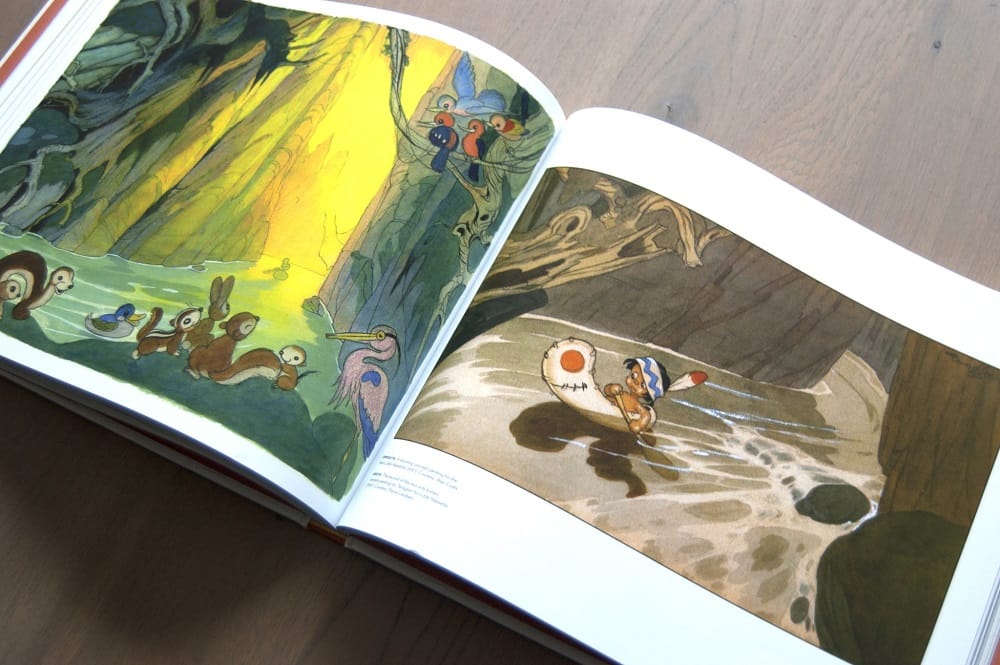An artist’s book is a medium of artistic expression that uses the form or function of “book” as inspiration. It is the artistic initiative seen in the illustration, choice of materials, creation process, layout and design that makes it an art object. A book that only contains text is simply a book; even if authored by an artist, it would be a book that belongs in a book store or the shelves of a library.
What truly makes an artist’s book is the artist’s intent, and artists have used the book as inspiration in a myriad of ways and techniques, from traditional to the experimental. The book could be made through fine press printing or hand-crafted, the pages illustrated with computer-generated images or cheap photocopies; books became sculptures, tiny and gargantuan; books were sliced up and reconfigured, made from all kinds of materials with unconventional objects incorporated, in unique or limited editions, or produced in multiple copies. With all sorts of ideas behind them, artists continue to challenge the idea, content and structure of the traditional book.
A little history…
Although artists have illustrated the words of others in books since the advent of the printed book itself in the 1400s, the book as art object is a product of the 20th century. In Europe from the 1950s, artists were experimenting with the book format, making books with unique printing and bindings, such as slits or holes cut through the pages and unique shapes for the binding or boxing. In the United States, Ed Ruscha produced some of the first artists’ books consisting of compilations of photographs with a title on the front cover and little narrative quality. Other artists used the book format to create narratives to deal with difficult or emotional issues, and some used it as a cheap, portable way to make the artwork available to a broader public than the gallery and museum world allowed.
Fast forward to today, artists’ books exist at the intersections of printmaking, photography, poetry, experimental narrative, visual arts, graphic design, and publishing. Artists’ books have made a place for themselves in the collections of museums, libraries and bibliophiles, they have caught the interest of art historians and critics writing about art, and there are numerous studio programs in art schools dedicated to the art of the book, ushering in new generations of artists making books.
There are a few complications with artists’ books. Compared with other 20th century art movements and media, such as Conceptualism or sculpture, there are few scholarly texts dedicated to the medium, and the existing scholarship does not always agree! Even how to properly punctuate the term is disputed: whether “artist’s book,” “artists book” or “artist book.” Not to mention the question of where they physically belong—in museums or in libraries? Books are meant to be touched, and their pages turned, but an art object is usually only experienced under glass in a museum. These are issues that affect the work of artists, practitioners of book arts, curators, museum collections staff, librarians, publishers and others.
Advantages of Art Books
I started thinking what would the benefits be for artists to participate in and contribute to such a book. Here are a few I can think of:
- Great exposure – the book is sold worldwide and today, via MOOD The Art of Today, you can literally buy such books anywhere around the globe. Whether the customers will be art collectors, galleries, art schools, other artists or libraries, your artwork can be exposed to an amazing number of people all over the world. Who knows what can happen with such exposure…
- Permanent art show – Isn’t a printed book is like a permanent art show? The books are usually juried, just like other art shows, and the artwork is printed and displayed in the best possible way. Once the book has been printed, it will never be erased or destroyed. Copies are distributed, sold and kept in many locations, making it more permanent than a short-time show.
- Acceptance – your artwork was selected, among many other entries, to be featured in a beautiful book. If this is not a success story for your acceptance as an artist, then what is?
- Build your résumé – again, once your art is juried into the book. Add it as another achievement to your ever-growing resume.
- Cheaper than self publishing your own book – many artists get to a point in their career that a book of their own work is due. For the emerging artists, it is an open call for artists, more than ever, a great option but still can be costly. Maybe one step before that is participating in a collective group of artists, publishing together, and therefore splitting the costs involved in such a project.
I am not sure yet what my opinion is about the marketing-books, especially those that are still quite costly to be part of. I would actually love to hear from you.
Have you ever participated in such a book?
What are other benefits, or on the other hand, caveats, of such undertaking?




